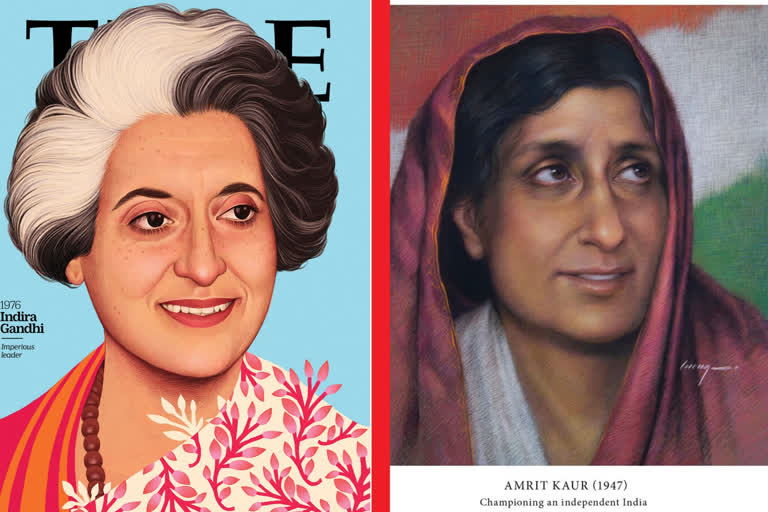New York: Former prime minister Indira Gandhi and freedom fighter Amrit Kaur have been named by the TIME magazine among the world's 100 powerful women who defined the last century in a new project that "spotlights influential women who were often overshadowed."
TIME named Kaur as 'Women of the Year' for 1947 and Gandhi for 1976 in special covers recreated by the publication.
Read also: Greta Thunberg accuses world leaders of 'creative PR'
The profile in TIME said that in 1976, Gandhi, "'Empress of India' had become India's great authoritarian."
Daughter of India's first prime minister Jawaharlal Nehru, Gandhi was "as ruthless as she was charismatic," the profile said, adding that by 1975, as a result of economic instability, Gandhi's government was swamped by an avalanche of street protests, and after her election was deemed invalid, she declared an emergency.
Read also: Thunberg scolds Davos elites over climate as Trump arrives
Kaur's profile said that the young princess returned to India in 1918 after studying at Oxford and soon became fascinated by Mahatma Gandhi's teachings. Born into the royal family of Kapurthala, Rajkumari Kaur "decided her life's mission was to help India break free from its colonial ties and oppressive societal norms."
She tackled social issues, pushing for women's education and the right to vote and to divorce, and speaking out against child marriage.
After India got independence in 1947, Kaur became the first woman to join the Cabinet, serving as Health Minister for 10 years. In that position, she founded the Indian Council for Child Welfare, helped establish the country's top hospital and medical college and campaigned to prevent malaria, likely saving hundreds of thousands of lives, the TIME profile said.
Outlining the reason for the Women of the Year' project, TIME said that for 72 years, it had named a Man of the Year, who "was almost always a man, usually a President or a Prime Minister or perhaps a titan of industry. Throughout history, these are the kinds of men who have wielded influence over the world."
The title of Man of the Year gave way to Person of the Year in 1999 to be more inclusive and gender-sensitive but yet the choice was the same - a man.
"With this 100 Women of the Year project, we're spotlighting influential women who were often overshadowed. This includes women who occupied positions from which the men were often chosen but far more who found their influence through activism or culture, the US publication said.
The project is an exercise in looking at the ways in which women held power due to systemic inequality. "Women," former TIME editor-in-chief Nancy Gibbs writes, "were wielding soft power long before the concept was defined."
To recognise these women, TIME created 89 new TIME covers, many of which were designed by prominent artists. The publication left intact the 11 covers for women who had been named Person of the Year. The 100 choices in this project are the result of a months-long process that began with more than 600 nominations submitted by TIME staff, experts in the field and a committee of notable women from various backgrounds.
The project has named several prominent women leaders through the century including designer Coco Chanel, author Virginia Wolf, Queen Elizabeth, actress Marilyn Monroe, Princess Diana, Chinese pharmaceutical chemist Tu Youyou, only Japanese citizen and first woman to lead the UN refugee agency Sadako Ogata and former First Lady Michelle Obama.
With inputs from PTI



